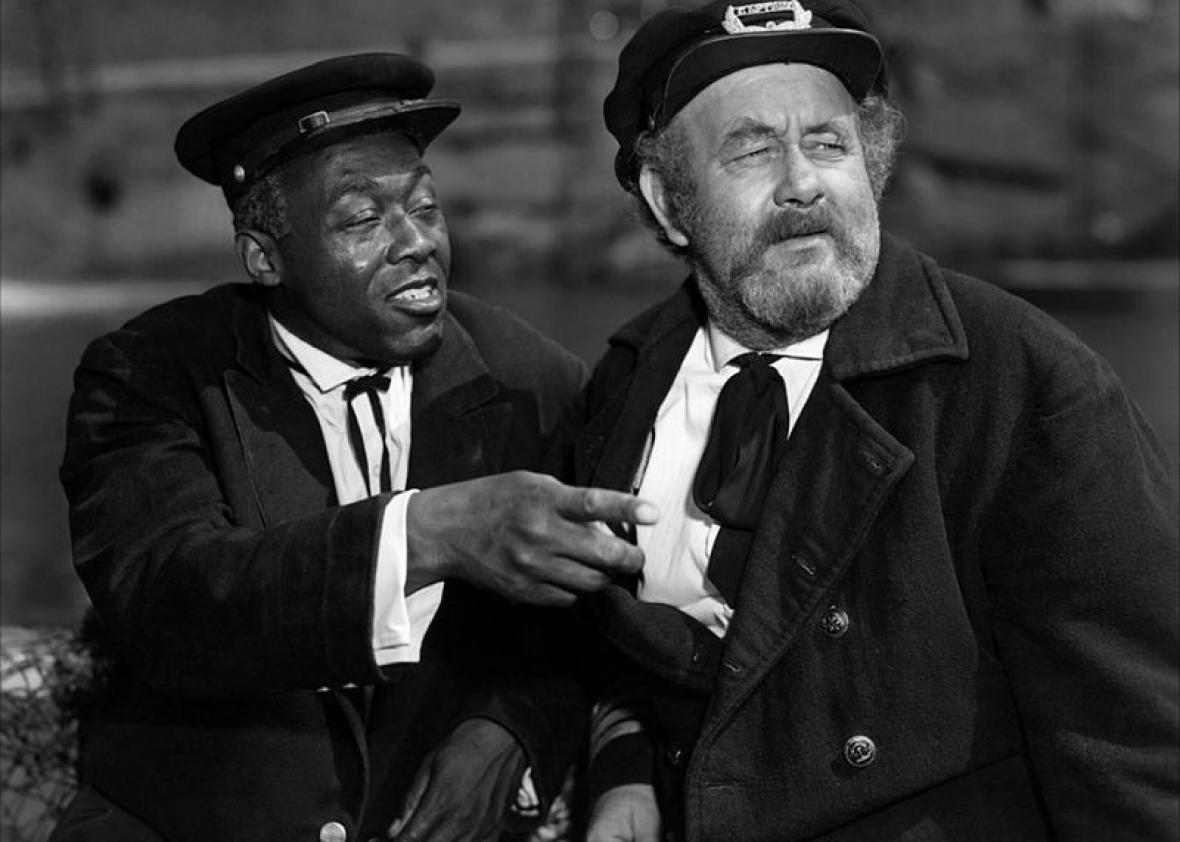This article originally appeared in Vulture.
A block away from Hollywood Boulevard, at 1751 Vine Street, sits a peculiar star on the Walk of Fame in Los Angeles, a reminder of a period of history that many in the film industry might prefer to forget. It honors one Lincoln Theodore Monroe Andrew Perry, better known as Stepin Fetchit—a comedian from Alabama (by way of the Bahamas) who was the first black actor to earn a million dollars, thanks to a demeaning, racist character type.
In the history of American black comedy, the specter of minstrel shows, blackface, and crude stereotype is ever-present. Success in Hollywood for minorities often comes with compromise: playing the buffoonish comic relief, the drug dealer, the “welfare queen,” the victim. There are many stories like Stepin Fetchit’s—financial success in exchange for years of shucking, jiving, and coonery. Fetchit alone starred in 28 films from 1925 to 1934, successfully transitioning to Hollywood’s sound era, where he played only slight variations on the character he honed in a two-man Chitlin circuit act. He rose from working in carnivals to as high as one could go as a black man in show business. But as influential as his work was in opening doors for black people in comedy, it is forever linked to the bigoted stereotype it popularized. His complicated legacy offers insights into a tension that still exists for black comedians today: how to remain defiantly black and proud in a system that was not built for you, and not be forced to choose between popular recognition and your basic human dignity.
Fetchit entertained audiences with one recurring shtick: a mumble-mouthed aversion to work. This character type reflected the attitudes of white America toward black Americans at the time, as Mel Watkins describes in his book, On the Real Side: A History of African-American Comedy. Watkins cites racist jokes in magazines, like Life and College Humor, that reinforce the image of the “shiftless coon” figure Fetchit was simultaneously popularizing onscreen—mentally deficient, averse to hard labor, and constantly begging for handouts.
Perhaps no film demonstrates this better than John Ford’s 1934 film, Judge Priest—a paean to the institutionally racist post-Reconstruction South—in which Fetchit stars, with his comic persona on full display. He gives a languorous performance as the shiftless best friend to a Civil War veteran judge played by Will Rogers. Fetchit’s character, Jeff Poindexter, serves little purpose in the narrative other than to portray the titular judge’s Depression-era version of tolerance. He pals around with Poindexter, inasmuch as he finds his laziness amusing. Fetchit as Poindexter isn’t quite loyal to Judge Priest—more opportunistic and happy to take advantage of his largess. In one scene, he tries to scam drinks meant to quench Priest’s thirst before a pivotal croquet match.
To a segment of the African-American critical community, Fetchit was subversive for the time. “It was called ‘putting on old massa’—break the tools, break the hoe, do anything to postpone the work that was to be done,” Watkins told NPR. But the intent of a joke does not always overlap with the reception it receives. To see the issue with this interpretation of the Stepin Fetchit character, you need look no further than the way white audiences perceived the character. The New York Times review of Judge Priest called Fetchit’s portrayal of Poindexter “a cloudy streak of greased lightning” and “riotous.” There’s nary a hint that his performance was seen as anything but a light comic trifle, funny for what it was on the surface, not for any social critique it offered. There are echoes of this in how modern comics are received. Take Tyler Perry’s Madea character, or Martin Lawrence, who starred in the 2001 film Black Knight—a movie with the comic conceit that a stereotypical black person yelling through the Middle Ages is hilarious.
Then there’s Dave Chappelle and Chappelle’s Show. As he’s a byproduct of growing up watching Richard Pryor, Redd Foxx, Dick Gregory, and other black comedians who pushed the art form through pointed racial critique, it was not surprising that Chappelle would use his basic cable platform to pick at the scabs of America’s institutionally racist history. Eventually, Chappelle hit his limit and chose to push no more, after becoming uncomfortable by the way a white audience member laughed at a sketch about a pixie in blackface convincing people to act in stereotypical ways. The scab was off.
That black-pixie sketch was, in a sense, a callback to the legacy of Stepin Fetchit, a reminder of the boxes white America put black performers into, and, inadvertently, a warning that we might not have come all that far in the century since. As African-Americans, we always have to wonder if they’re laughing with us or at us. What black audiences might see as satire or parody, white audiences could interpret as the confirmation of long-held, dangerous beliefs. From the shiftless coonery of Stepin Fetchit to the fast-talking con-man figures made popular by Eddie Murphy, Martin Lawrence, and now, Kevin Hart, the comic representations of black people in comedy sometimes act as stand-ins for real interactions with actual African-Americans. Such is the burden of the black comic—to not only give audiences the characters and situations that will make you a star, but also to represent a positive image for an entire community of people. Stepin Fetchit really only had the choice of serving the former. Chappelle chose to walk away before he lost sight of the latter. We shouldn’t have to choose.
See also: Do We Expect Too Much of Dave Chappelle?
